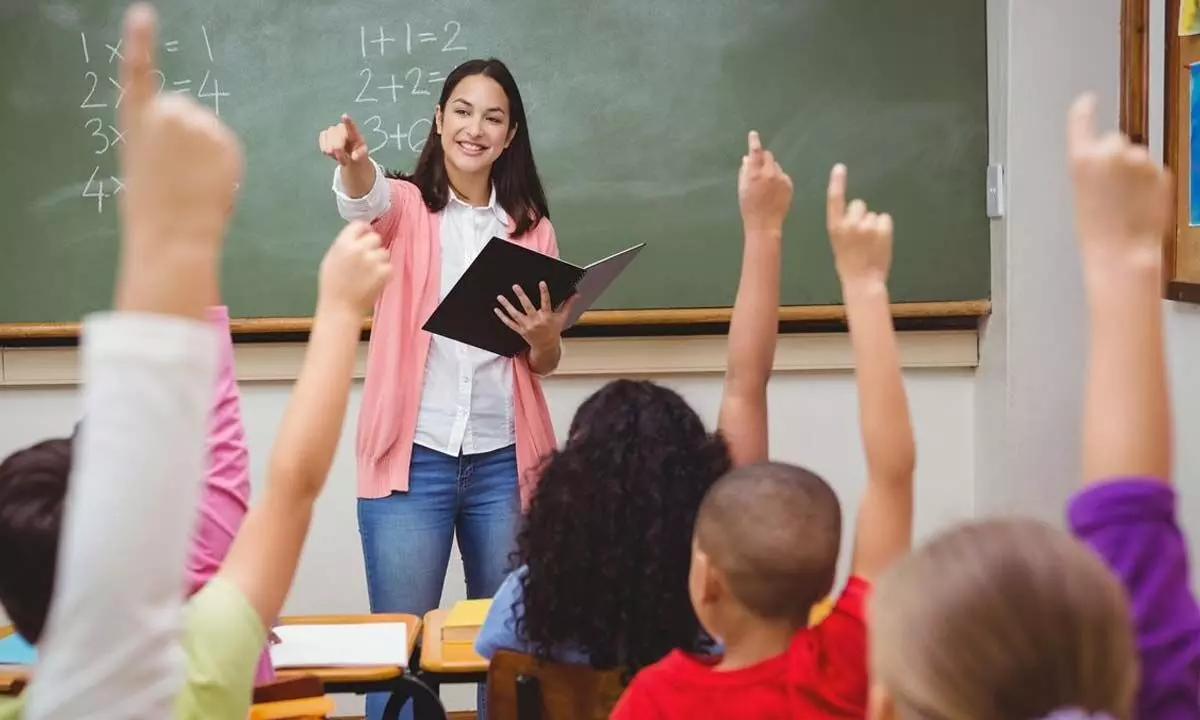Educational technology is empowering offline classes

Educational technology is empowering offline classes
The Covid 19 pandemic caused a paradigm shift in the education industry. It was forced tolook for creative, technology-based solutions to build an effective learning environment for students.During the pandemic, schoolsmoved frombrick-and-mortar style of education to e-learning solutions to continue delivering education.
The Covid 19 pandemic caused a paradigm shift in the education industry. It was forced tolook for creative, technology-based solutions to build an effective learning environment for students.During the pandemic, schoolsmoved frombrick-and-mortar style of education to e-learning solutions to continue delivering education.
The adoption of technology and processes has helped schools not only better withstand interruptions but also raise their standards for educational outcomes. The combination of offline and online learning often called blended learning has created a more effective learning and technology culture in the classroom. It has largely solved the problems and challenges faced by different stakeholders at different levels. The blended learning adoption by students and teachers has created flexible opportunities to meet their needs efficiently.It has significantly improvedstudent efficiency and understanding. While offline lessons provide a physical platform,physical learning allows students to hone their interpersonal skills.
Here are the 5 ways educational technology is empowering offline classes:
Access to quality education
The development of technological tools has made high-quality education more widely accessible. Technology adoption is changing the globe, and it has made it possible for students to attend higher-quality education now. Today's technology has made it possible for schools to accelerate learning and close achievement gaps for all individuals.Students can also have access to online materials and study guides to help them make up for missed lessons.
Multimedia Classrooms
The ability to integrate multimedia into the core curriculum and classroom activities not only increases student involvement and lesson retention but also helps the teacher engage the class. In this quick-paced environment, students are used to acquiring knowledge and information promptly and are continuously exposed to technology.
Multimedia classrooms encourage student participation in group projects, diverse modes of knowledge expression, problem-solving, self-revision, and knowledge construction are all facilitated by multimedia activities.To accommodate every type of learner, teachers can incorporate a wide range of multimedia and technological resources into their lessons. A few examples of effective technology available to educators are texting, video education, internet games, and podcasts. Technology and multimedia have increased accessibility and portability of education both within and outside of the classroom.
Peer interaction
A crucial component of education is community-based learning. It aids in developing emotional intelligence, body language, and collaborative understanding and experience. Additionally, students learn how to cooperate and work together to accomplish larger, more difficult tasks. However, the pandemic's online schooling has drastically decreased this component of learning.
Moving elements of education online will eventually improve the efficiency of classroom instruction. An active learning method like the jigsaw, for instance, divides a class of students into various groups, with each group reading a different article or resource on the subject. Students who have read the same resource in an in-person session can solidify their understanding in small groups. Further everyone is divided up into several little groups so that no two have read the same thing.
Content delivery
As a means of conveying good content to students from legitimate sources, the classroom lecture evolved into the dominant teaching method. Due to the internet, information today is much easier to come by. Through the use of blended learning, students have been able to progress through the online tools and content that their teachers have generated and assembled. To solve issues and complete projects, they work together in small groups. They are stretched and challenged by their peers and teachers while learning at a speed that is comfortable for them.
Blended Learning / Hybrid learning
Hybrid teaching models suggest that teachers teach in two ways at the same time, dividing their attention and ability to be present to students. Hybrid learning refers to the simultaneous teaching of two groups of students, one in person and the other online. Blended learning is a mode of learning in which students learn through electronic and online means, as well as traditional face-to-face learning. Providing a flexible course structure, giving students the option of taking classes, participating online, or both. In a blended curriculum design, some courses are taught online, while other activities are taught in the classroom. Meanwhile, blended classrooms are bringing these tools online and making them available to students through distance learning portals and online learning management systems for use outside of traditional school settings.















